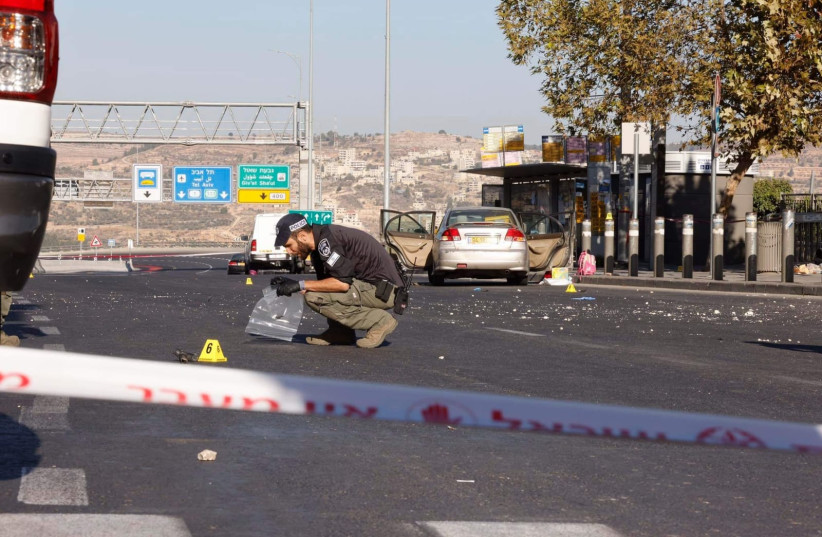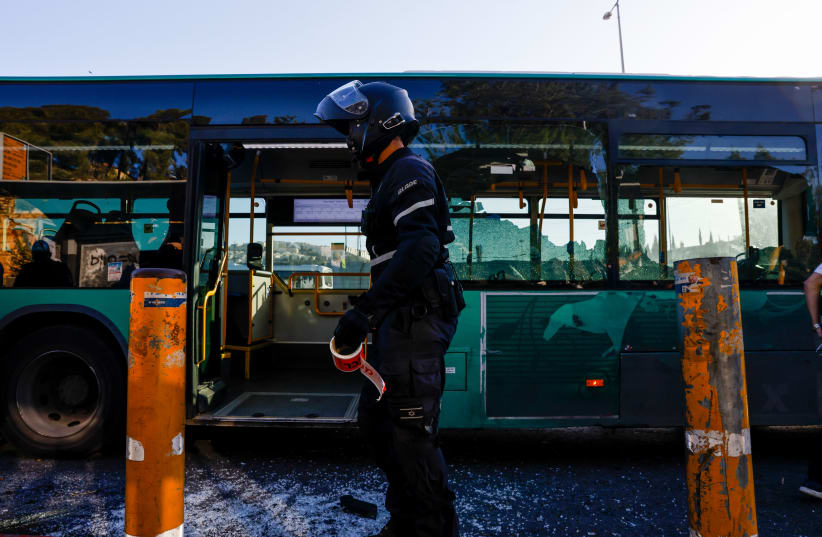The sirens began just after seven in the morning.
Police and security forces across the city were responding to a bombing at the entrance to the city. I was in traffic.
Jerusalem has a certain feel every time there are terror attacks or incidents like this. Sirens can be heard across the city and because the city is set amid hills, so the echoes and sound can be heard in a cacophony. One siren. Then two. Then police cars. Then police on motorcycles. Then ambulances.
This is the routine of a city that has known terror attacks for decades.
The entrance to Jerusalem is set on the top of a steep hill, and beneath it are highways that circle and enter the city. The blast this morning occurred at a major hitchhiking spot and bus stop at the entrance to the city. This area is crowded with people in the mornings. Traffic here is always endless at rush hour, with the cars and buses snaking their way down the hill, passing the hitchhiking spot, and then making their way beneath the Bridge of Strings that welcomes people to the capital.
The site of the attack was the entrance to a religious neighborhood with a playground just across the street. An hour after the explosion, the debris from the bombing was still strewn around the road. There was a damaged scooter, a car left abandoned with all its doors open, as if the occupants had fled suddenly. There was shattered glass, green and shimmering in the morning light. Police had blocked both directions of Route 1, cutting off the city to some extent. A second incident in the valley between Jerusalem and the suburb of Ramot had also occurred.
Police and security forces surrounded the area of the attack, parking their cars and motorbikes around.

The numerous layers of security and police were on the scene, including ambulances and medics, people marking the various bits of the suspected bomb, Border Police and others. Around the scene, but kept back by police, were onlookers, mostly religious youth from the nearby neighborhood. These people have seen terror in the past. In 2008 a terrorist entered the Mercaz HaRav yeshiva in the nearby Kiryat Moshe neighborhood and killed eight people, injuring 11.
Further up the hill, beyond the bus station and Bridge of Strings, there was a terror attack that same year done with a bulldozer. There was also a wave of stabbing attacks in 2015 and 2016, some of which targeted people near the Jerusalem Central Bus Station. There were stabbings in 2017 and 2021. This area, therefore, knows terrorism.
The crowd that gathered on Wednesday was not agitated or shouting. They were not particularly surprised by the incident, but they were interested in what had happened and who was coming to inspect the incident. When the mayor of Jerusalem arrived around 8:40 there was a buzz in the crowd. Some kids tried to speak to the mayor, but he didn’t respond. He walked around the scene and then got back in his car.
Because the terror attack came in the wake of elections and many people are expecting a new right-wing government to be sworn in, many of the religious youth were convinced that Itamar Ben-Gvir was going to arrive. Every time a large SUV pulled up that seemed to have important officials in it, the kids would say “Ben-Gvir is here.” But he wasn’t. So they would wait and hope. Eventually, at 9:06 in the morning, the far-Right, possible Public Security minister did appear in a dark suit – and the crowd waited to see if he would give a speech after seeing the site of the attack.
Not far from the scene of the attack, the city was going on as usual. Near the Bridge of Strings, the Light Rail was running. Construction workers were completing a new part of the railway and traffic police were directing traffic. The sounds of sirens continued to echo around the city, bouncing off the buildings at the entrance. Activity in the "City that is Used to Terrorism" goes on.
